new posts in all blogs
Viewing: Blog Posts Tagged with: Womens History Month, Most Recent at Top [Help]
Results 26 - 50 of 97
How to use this Page
You are viewing the most recent posts tagged with the words: Womens History Month in the JacketFlap blog reader. What is a tag? Think of a tag as a keyword or category label. Tags can both help you find posts on JacketFlap.com as well as provide an easy way for you to "remember" and classify posts for later recall. Try adding a tag yourself by clicking "Add a tag" below a post's header. Scroll down through the list of Recent Posts in the left column and click on a post title that sounds interesting. You can view all posts from a specific blog by clicking the Blog name in the right column, or you can click a 'More Posts from this Blog' link in any individual post.
Emerson students have been so excited to share their projects on amazing women. I just love the way they're celebrating women who inspire them. Over the next week, I'd like to share several projects.
Orion was inspired by learning about Jane Goodall, through the
Jane Goodall Institute and Patrick McDonnel's wonderful book
Me, Jane. He worked with his parents to create a wonderful
Animoto-- click through to watch it.
Mykeia created a Google Presentation about Fantasia Bronno, an amazing winner of American Idol.
One of the things I've loved about this project is how excited the kids are to find out about these women and share their information in new and interesting ways. Because it isn't a required project, it's more fun to do! And, they've learned great presentation skills, while having fun.
If you see any projects that you like, it would mean a whole lot to our Emerson students if you left a quick note. Thanks so much learning about these great women --
©2014 Mary Ann Scheuer, Great Kid Books

Do you remember when you were a little kid and looked into the cockpit of an airplane? Wowwwww... all those controls and buttons and dials. I love sharing the story of early women pilots, and one of my favorites is
Sky High: The True Story of Maggie Gee. Pair this with a great video interview of Maggie, which I'll include below.
Sky High:
The True Story of Maggie Gee
by Marissa Moss
illustrated by Carl Angel
Tricycle Press, 2009
Amazon
your local library
ages 6 - 10
As a young girl, Maggie Gee longed to fly, but it wasn’t until World War II broke out that she was able to achieve this dream. One of only two Chinese-American women to join the Women Airforce Service Pilots (WASP), Maggie’s passion for flying shines through in this biography of a true local hero. Gee went to UC Berkeley and was a longtime resident of Berkeley after her days in the WASP.
 |
Maggie Gee
WASP 44-W-9 |
Young kids often ask me, "Is this real? Is she still alive?" They're trying to put history into context. Maggie Gee lived in Berkeley for many years, passing away in February 2013. Here is a wonderful interview to share with students:
Older students might want to use this as a launching pad for talking with neighbors, family members and friends about their experiences when they were younger. I found this article about Maggie Gee in
Bay Area Insider also very interesting.
The review copy came from our school library. If you make a purchase using the Amazon links on this site, a small portion goes to Great Kid Books (at no cost to you!). Thank you for your support.
©2014 Mary Ann Scheuer, Great Kid Books
Do we help our girls by sharing stories of women who broke through barriers, daring the world to accept them as they wanted to be seen? I definitely think we do. Who knows what our girls will want to do as they explore their passions and confront others' expectations. Tanya Lee Stone's upbeat portrait of Elizabeth Blackwell is a delight to share with young girls.
Girls will like the way Tanya Lee Stone talks directly to them right from the beginning:
"I bet you've met plenty of doctors in your life. And I'll bet lots of them were women. Well, you might find this hard to believe, but there was once a time when girls weren't
allowed to become doctors." Young readers will be drawn in by Stone's challenge: Who do you think changed all that?
Elizabeth Blackwell loved exploring new things, taking on challenges and doing the best she could. Don't you just love Marjorie Priceman's illustrations? As The Horn Book writes, they lend a perfect framework of energy and pacing to the text."
Even though she was rejected from 28 medical schools, Elizabeth kept pursuing her dream. Read this aloud with 1st through 4th graders, talking about what qualities helped Elizabeth persevere. See where you can see her courage, sense of self, and determination.
For more resources, definitely check out
The Classroom Bookshelf, a blog created by four terrific professors of education and literacy. Their posts include a wealth of ideas for using books as a springboard for discussions and projects. They also always include many links to pursue for further information. Here are some gems they share about Elizabeth Blackwell:
Illustration copyright © 2013 by Marjorie Priceman, Who Says Women Can’t Be Doctors?, written by Tanya Lee Stone. Published by Christy Ottaviano Books/Henry Holt, an imprint of Macmillan Children’s Publishing Group. The review copy came from our school library. If you make a purchase using the Amazon links on this site, a small portion goes to Great Kid Books (at no cost to you!). Thank you for your support.
©2014 Mary Ann Scheuer, Great Kid Books
 Pure Grit:
Pure Grit:
How American World War II
Nurses Survived Battle and
Prison Camp in the Pacific
by Mary Cronk Farrell
Middle School, High School Abrams 160 pp.
2/14 978-1-4197-1028-5 $24.95
There are many books written about young people enlisting in the military, being unprepared for the horrors of battle or tortures of capture, serving bravely, and coming home. But women? In direct fire? In POW camps? During World War II? Not so many, a void Farrell admirably fills with this account of the more than one hundred army and navy nurses who served in the Philippines during the bombing and evacuation of Manila, the Battle of Bataan, and the evacuation and surrender of Corregidor. During every battle and every retreat, and even within the walls of the POW camps (where many were incarcerated from 1942 to 1945), these nurses cared for the injured under the most primitive of conditions. Using information taken mainly from historical interviews and modern correspondence with the subjects’ relatives, Farrell directly confronts the horrors of war and the years of inhumane treatment in the POW camps. These women — malnourished, ill with diseases such as malaria, dysentery, and beriberi —
established multiple hospital sites and often shouldered doctors’ medical duties. Many returned home with disabilities and lifelong medical problems; though many suffered from PTSD, no mental health services were available to them. The book design is double-columned utilitarianism; archival photographs vary in effectiveness: many are posed group shots while others are (understandably) grainy, offering context over clarity. The account concludes with a timeline, glossary, list of nurses, documentation, bibliography, suggested websites, and an index.

The post Review of Pure Grit appeared first on The Horn Book.
Frida Kahlo's artwork captures my imagination. I love introducing her artwork to younger students with the beautiful picture book
Me, Frida by Amy Novesky and illustrated by David Diaz. Novesky focuses on how Frida really came into her own, discovering her own voice through her artwork.
Me, Frida
by Amy Novesky
illustrated by David Diaz
Abrams, 2010
Amazon
your local library
ages 6-10
This lush picture book focuses on Frida Kahlo’s trip to San Francisco with her new husband, Diego Rivera. Frida felt so far away from home in our cool, gray city, but as she started exploring the city on her own and began painting she began to find a place for herself. The spread below shows Frida after she found her voice, painting "something great: a colorful wedding portrait of herself and Diego. She painted Diego big, and she painted herself small, just as the world saw them."
Glowing with vibrant, jewel-tone colors, this book will inspire young readers to learn more about this glorious artist. David Diaz's work is truly stunning. Head over to
Amy Novesky's website to see more.
For older students, I would direct them to both the PBS website for the film
The Life and Times of Frida Kahlo and the
SFMOMA website from their exhibition on Frida Kahlo. In the SFMOMA site, check out the interesting multimedia resources for interactive features that kids (ages 9-12) will find interesting.
 |
| SFMOMA website's interactive feature on Frida Kahlo |
Illustrations copyright 2010, David Diaz, shared with permission of the publishers. The review copy came from our school library. If you make a purchase using the Amazon links on this site, a small portion goes to Great Kid Books (at no cost to you!). Thank you for your support.
©2014 Mary Ann Scheuer, Great Kid Books
I know in my heart that we can bore our kids with history or we can engage them, show them them that it matters, that it's wrought with conflict -- and we're still wrestling with many of these same conflicts today.
Try showing these two videos, with clips of powerful actresses reading Sojourner Truth's speech,
Ain't I a Woman, and see what your kids think.
History.com -- Kerry Washington reads from Sojourner Truth's speech Ain't I a Woman
Kerry Washington combines the swagger of today's girls with Sojourner Truth's strong declarations. I like the way this video clip splices together parts of Truth's speech with Washington's reflections on why it's important to learn about history.
Alfre Woodward reads from Sojourner Truth's speech Ain't I a Woman
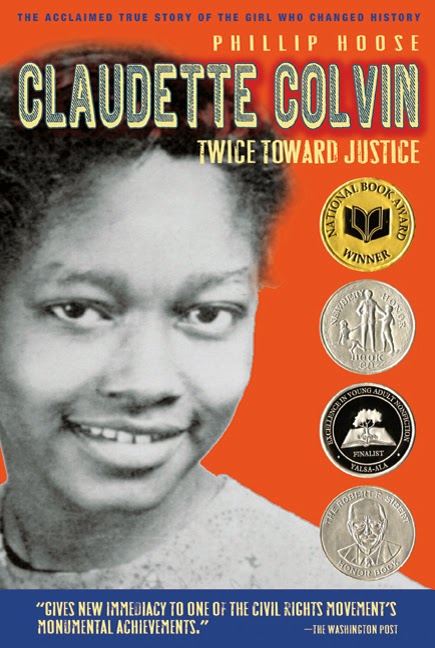
This video clip has much more of Sojourner Truth's speech, It would be very interesting to have kids watch both of these videos and talk about what each actress brings to their performance.
What questions does Truth ask that we could still ask today? What issues are we still wrestling with?
I would follow up this with reading aloud
Claudette Colvin: Twice Toward Justice (read my
full review here) -- one of my all-time-favorite nonfiction books.
Both of these videos came from Anthony Arnove, co-editor, along with Howard Zinn, of Voices of a People's History of the United States. See more at
Arnove's You Tube channel.
©2014 Mary Ann Scheuer, Great Kid Books
Mae West spoke those provocative lines in the movie
I'm No Angel, and women have been identifying with it ever since. But women were bad a lot further back than that 1933 movie. Find twenty-six of the world's most notorious females in
Bad Girls: Sirens, Jezebels, Murderesses, Thieves, & Other Female Villains by
Jane Yolen and
Heidi E. Y. Stemple, with illustrations by
Rebecca Guay.
Modern Times and Changing Gender Roles
If Salome dropped her veils today, would we call her bad? Or would we arrest her parents for a variety of crimes against a child? If Mata Hari made up a whole new self tomorrow and danced her way into a criminal lifestyle, would we execute her or send her to counseling for post-traumatic stress disorder? Would we encourage Lizzie Borden to move into her own apartment, Bloody Mary to establish an ecumenical council, and Typhoid Mary to take some nursing courses at a community college? Would we still consider these women bad? Or would we consider them victims of bad circumstances? As our world changes, so does our definition of
bad. Especially when it comes to half the world's population--the half that happens to be female.
With women's relatively new rights--to speak out, to vote, to have power over their own bodies--comes a new set of responsibilities. Women are no longer required to do a man's bidding--no matter whether that bidding is legal or not. But no longer can a woman say that she was just followign a man and count that as justification for bad acts.

We measure guilt and innocence today on a sliding scale. And never has it been easier for the general public to "weigh" the misdeeds of its favorite modern-day bad girls. The nightly news, tabloids, blogs, and the fast pace of the Internet all make sure of this. Today, as throughout history, the court of public opinion is capable of swaying or tempering the criminal courts.
Now that you have been introduced to some of history's bad girls, you will have to decide for yourself if they were really bad, not so bad, or somewhere in the middle. And perhaps you will see that even the baddest of bad girls may have had a good reason for what she did.
from the Conclusion of Bad GirlsMarch is Women's History Month!
What's it like to hold on to a dream? Can a role model truly encourage a young child, or is that just what parents and teachers tell themselves? There are times that sharing a story helps me keep faith, just as much as reading an inspiring biography.
A Dance Like Starlight is a book that filled me with hope and warmth, as I read about one little ballerina's dream.
A Dance Like Starlight
One Ballerina's Dream
by Kristy Dempsey
illustrations by Floyd Cooper
Philomel/Penguin, 2014
Amazon
your local library
*best new book*
ages 4-9
A young African American girl longs to dance with the ballet school, but her mama says "wishing on stars is a waste anyhow." Hope is the key, mama says, but "hoping is hard work." Her mama certainly knows hard work, taking in laundry at night, and working every day sewing and cleaning costumes for the ballet school.
 |
Mama says
hoping
is hard work. |
When the Ballet Master sees her dancing in the wings, he notices her talent and dreams and invites her to join lessons each day "even though I can't perform onstage with white girls." Demspey and Cooper build up the story slowly and softly, helping readers understand the setting in 1950s New York, the discrimination at play.
When Mama takes her daughter to see Miss Janet Collins, the first African American prima ballerina to dance with the Metropolitan Opera House Ballet, the little girl's heart soars, "dancing, opening wide with the swell of the music."
 |
It's like Miss Collins is dancing for me,
only for me
showing me who I can be |
This story reminds me of the power of role models, the way they can inspire us to reach out for our dreams and persevere through hard times. Floyd Cooper's artwork is uplifting and dreamy, with soft grainy textures. Did you know he creates all his artwork by first painting layers, and then erasing them slowly to reveal the shapes?
Share more information about Janet Collins with your children. I loved reading about her in the
New York Public Library article and this
New York Times article, both celebrating the life of Janet Collins.
Thanks very much to Deborah Ford's and Junior Library Guild's
Booktalks to Go LiveBinder. If you're looking for more books to read with kids and information to make that reading experience richer, I highly recommend this site.
All illustrations are copyright ©Floyd Cooper, 2014, shared with permission of the publisher, Penguin Books for Young Readers. The review copy came from our school library collection. If you make a purchase using the Amazon links on this site, a small portion goes to Great Kid Books (at no cost to you!). Thank you for your support.
©2014 Mary Ann Scheuer, Great Kid Books
I read ten or more books each week. They feed my soul. But they also start swimming around in my mind like minnows in a stream. So how do I keep track of the books I've read, remember those I've liked and recommend books to friends? I have used Goodreads for over five years, and I love it.
Here's my shelf on books to recommend for Women's History Month, with just five of the books I've recently added. Click through to Goodreads to see more!
When I'm doing a blogging challenge or planning a teaching unit, Goodreads helps me remember books I've read -- kind of like browsing the physical shelves in my library. How do you keep track of the books you've read and those you want to read? Do you like keeping this list to yourself, or do you like sharing it with friends?
©2014 Mary Ann Scheuer, Great Kid Books

By: AlyssaB,
on 3/15/2014
Blog:
OUPblog
(
Login to Add to MyJacketFlap)
JacketFlap tags:
*Featured,
germantown,
avenue,
congregations,
faith on the avenue,
international women's month,
katie day,
religion on a city street,
women in leadership,
hagar,
sandberg,
hurleyite,
sheryl,
Books,
women,
Religion,
women's history month,
pastor,
Philadelphia,
leadership,
pastors,
Humanities,
religion in america,
Add a tag
By Katie Day
I am one of the last professional women I know to read Lean In by Facebook COO Sheryl Sandberg (Knopf, 2013). If you are also among the laggards, it is an inspiring call to women to lean into leadership. Too often, Sandberg shows through research and life story, women are not considered “leadership material,” and not just by men. We also send that message to ourselves, and attribute any success to external factors such as luck and the support of others. We just don’t think we have the right stuff to be leaders.
Too bad Sheryl Sandberg has not been to Germantown Avenue in Philadelphia. After studying the communities of faith along that one street—around 88 congregations, the number fluctuating year to year—I found one thing that stumped me. There are a whole lot more women in leadership in these houses of worship than in any national sample of clergy. The most generous research findings reflect 10-20% of congregations to be headed by women in the United States today. In my sample, 44% of communities of faith have female leadership. This phenomenon is true across the religious spectrum. “Prestigious pulpits” in the historic Mainline Protestant churches are disproportionately occupied by women. But so were the pulpits in small independent African-American churches. Two of the three mega-churches had women as co-pastors. In the third, the associate pastor is a woman and considered the heir-apparent for the senior position. Two of the three peace churches had women leaders. There are no longer Catholic churches on the Avenue (which don’t have women priests), and the two mosques I researched were led exclusively by men. But the small Black spiritualist Hurleyite congregation (Universal Hagar) has a woman as pastor.

Universal Hagar Church, a Hurleyite congregation, is located across the street from Fair Hill Burial Ground. Photo by Edd Conboy. Used with permission.
How can we account for this? It might have something to do with Philadelphia’s cultural history of inclusivity, providing a context in which women broke through the stained glass ceiling in the AMEZ and Episcopal traditions. Perhaps it is more closely related with the Great Migration North, in which women sought out church anchors in neighborhoods in which to settle. Frankly, I am hoping a researcher will figure this out…and bottle it!
More impressive to me than the numbers are the amazing women I interviewed. Women like Pastor Jackie Morrow, who started a church and a school in a row house, and ministers to everyone in her corner of Northwest Philly, from the young men who play basketball in her parking lot to the mentally challenged woman who regularly stops by for prayer, food, and a hug. Or Rev. Melanie DeBouse, who pastors in the poorest neighborhood in the city and is teaching young children to “kiss your brain” and older men how to read. Or Rev. Cindy Jarvis, senior pastor at the Presbyterian Church of Chestnut Hill, where she oversees a budget of over a million dollars and has underwritten efforts to prevent gun violence, provide health care for the poor, and a vibrant social and educational program for seniors. These women, and others on the Avenue, are leaning in to take leadership roles not in corporations but in the trenches of gnarly urban problems.
Make no mistake: I like Sandberg’s book. But the clergy women of Germantown Avenue are leaning into stronger headwinds with impressive competence and confidence. They inspired me more.
Katie Day is the Charles A. Schieren Professor of Church and Society at the Lutheran Theological Seminary at Philadelphia. She is the author of Faith on the Avenue: Religion on a City Street and three other books and numerous articles that look at how religion impacts a variety of social realities.
Subscribe to the OUPblog via email or RSS.
Subscribe to only religion articles on the OUPblog via email or RSS.
The post Leaning in appeared first on OUPblog.


By: Elyse Turr,
on 3/15/2014
Blog:
OUPblog
(
Login to Add to MyJacketFlap)
JacketFlap tags:
*Featured,
Books,
History,
Biography,
Africa,
women's history month,
World,
reading list,
Middle East,
America,
Asia,
British,
Latin America,
Europe,
Add a tag

This March we celebrate Women’s History Month, commemorating the lives, legacies, and contributions of women around the world. We’ve compiled a brief reading list that demonstrates the diversity of women’s lives and achievements.
Women in Asia
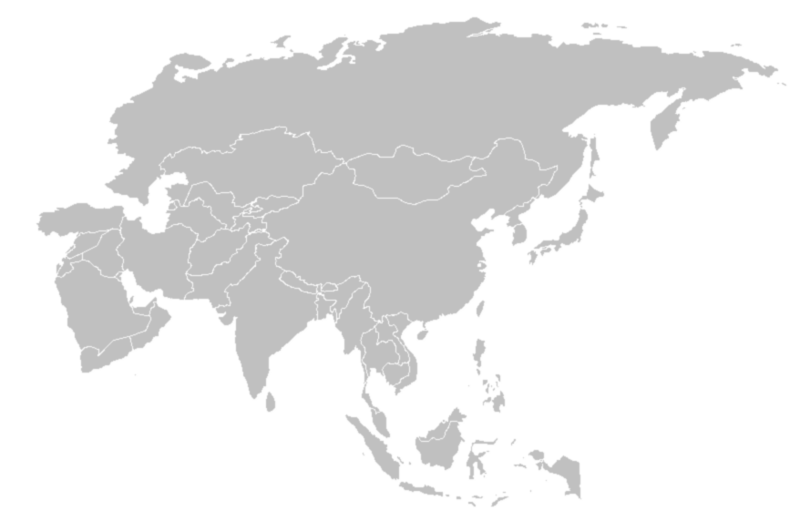
The Courtesan’s Arts: Cross-Cultural Perspectives, Edited by Martha Feldman and Bonnie Gordon
Delve into courtesan cultures, including artistic practices and cultural production, often overlooked or diminished in relevancy.
The Power of Gender and the Gender of Power: Explorations in Early Indian History by Kumkum Roy
Discover the distinct strategies through which men and women constituted their identities in India for all their implications, tensions, and inconsistencies.
Cornelia Sorabji: India’s Pioneer Woman Lawyer: A Biography by Suparna Gooptu
Learn about Sorabji’s decisive role in opening up the legal profession to women long before they were allowed to plead before the courts of law, including her writings and personal correspondence.
Women in the Middle East

Cleopatra: A Biography by Duane W. Roller
Uncover not the figure in popular culture, arts, and literature of the last five hundred years — but the real last Greek queen of Egypt.
Conceiving Citizens: Women and the Politics of Motherhood in Iran by Firoozeh Kashani-Sabet
Place women in their proper role as mothers of a nation — central to the history of Iran during successive regimes in the 19th and 20th centuries.
The Imperial Harem: Women and Sovereignty in the Ottoman Empire by Leslie P. Peirce
Examine the sources of royal women’s power and assess the reactions of contemporaries, which ranged from loyal devotion to armed opposition.
Women in British History

Singled Out: How Two Million British Women Survived Without Men After the First World War by Virginia Nicholson
Try to keep up with a generation of women fated to remain unmarried in the aftermath of the Great War.
The Wealth of Wives: Women, Law, and Economy in Late Medieval London by Barbara A. Hanawalt
Consider an overlooked contribution to London’s economy—the wealth that women accumulated through inheritance, dowry, and dower.
Queen Anne: Patroness of Arts by James A. Winn
Study the life and reign of Queen Anne through literature, art, and music from Dryden, Pope, Purcell, Handel, Lely, Kneller, Wren, Vanbrugh, Addison, Swift, and many other artists.
Women in European History

Murder of a Medici Princess by Caroline P. Murphy
Illuminate the brilliant life and tragic death of Isabella de Medici, one of the brightest stars in the dazzling world of Renaissance Italy, the daughter of Duke Cosimo I, ruler of Florence and Tuscany.
Writing the Revolution: A French Women’s History in Letters by Lindsay A. Parker
Investigate nearly 1,000 familiar letters, which convey the intellectual, emotional, and familial life of a revolutionary in all of its complexity.
The Burgher and the Whore: Prostitution in Early Modern Amsterdam by Lotte van de Pol
Delve into the cultural, social, and economic conditions of the lives of poor women in a seafaring society from the perspectives of prostitutes, their bawds, their clients, and the police.
Women in American History
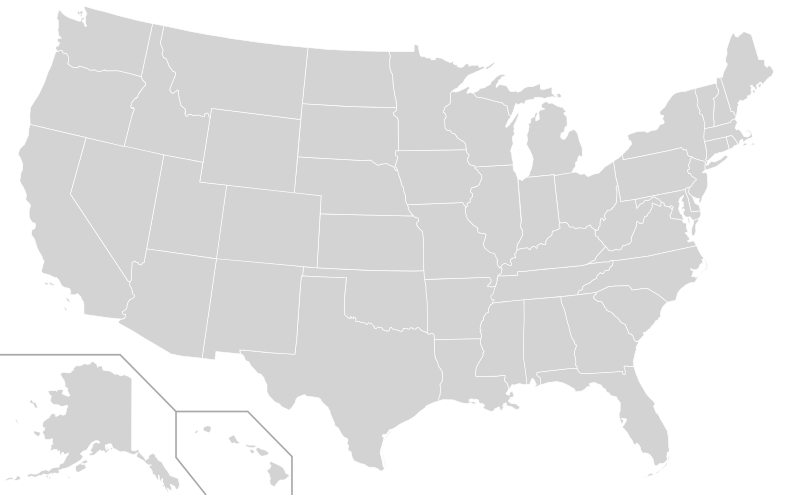
Southern Lady, Yankee Spy: The True Story of Elizabeth Van Lew, a Union Agent in the Heart of the Confederacy by Elizabeth R. Varon
Probe the life and work of one of the most remarkable women of the Civil War era–the leader of the North’s key spy ring in the South.
Working Women, Literary Ladies: The Industrial Revolution and Female Aspiration by Sylvia J. Cook
Trace the hopes and tensions generated by expectations of gender and class from the first New England operatives in the early 19th century to immigrant sweatshop workers in the early 20th.
Seneca Falls and the Origins of the Women’s Rights Movement by Sally McMillen
Join the meeting that launched the women’s rights movement and changed American history.
I Died for Beauty: Dorothy Wrinch and the Cultures of Science by Marjorie Senechal
Enter the provocative, scintillating mind of the talented and flawed scientist.
African American Women Chemists by Jeannette Brown
Connect to the lives of African America women chemists, from the earliest pioneers through late 1960′s when the Civil Rights Acts were passed, to today.
Women in Latin American History
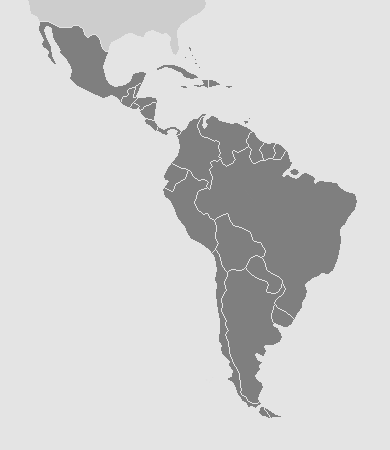
Power and Women’s Representation in Latin America by Leslie A. Schwindt-Bayer
Look at the recent trends in women’s representation in Latin America, and the complex and often incomplete nature of women’s political representation.
Refusing the Favor: The Spanish-Mexican Women of Santa Fe, 1820-1880 by Deena J. Gonzalez
Uncover the key role “invisible” Spanish-Mexican women played in the US takeover of Mexico’s northern territory and gain a greater understanding of conquest and colonization.
Weaving the Past: A History of Latin America’s Indigenous Women from the Prehispanic Period to the Present by Susan Kellogg
Reach back through women’s long history of labor, political activism, and contributions to — or even support of — family and community well-being.
Women’s history encompasses the history of humankind, including men, but approaches it from a woman‐centered perspective. It highlights women’s activities and ideas and asserts that their problems, issues, and accomplishments are just as central to the telling of the human story as are those of their brothers, husbands, and sons. It places the sociopolitical relations between the sexes, or gender, at the center of historical inquiry and questions female subordination.
Subscribe to the OUPblog via email or RSS.
Subscribe to only history articles on the OUPblog via email or RSS.
Image Credits: (1) Physical World Map via CIA World Factbook (public domain). (2) Map of Asia by Bytebear. CC-BY-3.0 via Wikimedia Commons. (3) Map of Middle East by NuclearVacuum. Public domain via Wikimedia Commons. (4) Map of Britain by Anonymous101. CC-BY-SA-3.0 via Wikimedia Commons. (5) Map of Europe via CIA World Factbook (public domain). (6) Blank US Map by Theshibboleth. CC-BY-SA-3.0 via Wikimedia Commons. (7) Map of Latin America and the Caribbean by Yug. CC-BY-SA-3.0 via Wikimedia Commons.
The post Celebrating Women’s History Month appeared first on OUPblog.


By:
keilinh,
on 3/14/2014
Blog:
The Open Book
(
Login to Add to MyJacketFlap)
JacketFlap tags:
hiromi suzuki,
Pura Belpré,
Wangari Maathai,
women's history,
Rosa Parks,
Musings & Ponderings,
zora neale hurston,
Anna May Wong,
Marcenia Lyle,
augusta savage,
florence mills,
patsy mink,
diversity,
women,
Book Lists,
women's history month,
Add a tag
In honor of Women’s History Month, we’ve rounded up ten of our books that feature some amazing women of color! From a baseball player to an American politician, these women have helped pave the way for many others.
1. Wangari Maathai, Seeds of Change: Planting a Path to Peace - the first African woman, and environmentalist, to win a Nobel Peace Prize

2. Marcenia Lyle, Catching the Moon: The Story of a Young Girl’s Baseball Dream - the first woman to play for an all-male professional baseball team

3. Anna May Wong, Shining Star: The Anna May Wong Story - the first Chinese American movie star

4. Florence Mills, Baby Flo: Florence Mills Lights Up the Stage - an international dancing and singing superstar during the Harlem Renaissance

5. Augusta Savage, In Her Hands: The Story of Sculptor Augusta Savage- a sculptor during the Harlem Renaissance who carved out her own special place in art history

6. Pura Belpré, The Storyteller’s Candle / La velita de los cuentos - New York City’s first Latina librarian

7. Patsy Mink, How We Are Smart - an American politician from the U.S. state of Hawaii

8. Hiromi Suzuki, Hiromi’s Hands - one of a handful of women in the male-dominated world of sushi chefs

9. Rosa Parks, Dear Mrs. Parks: A Dialogue with Today’s Youth - Mrs. Parks changed the course of history when she was arrested for refusing to give up her seat to a white passenger on a Montgomery, Alabama bus, sparking the beginning of the Civil Rights Movement

10. Zora Neale Hurston, Zora Hurston and the Chinaberry Tree - renowned African American writer

Filed under:
Book Lists,
Musings & Ponderings Tagged:
Anna May Wong,
augusta savage,
diversity,
florence mills,
hiromi suzuki,
Marcenia Lyle,
patsy mink,
Pura Belpré,
Rosa Parks,
Wangari Maathai,
women,
women's history,
women's history month,
zora neale hurston 


By:
Jen Robinson,
on 3/14/2014
Blog:
Jen Robinson
(
Login to Add to MyJacketFlap)
JacketFlap tags:
Twitter Links,
children's books,
philip pullman,
diversity,
book awards,
book lists,
schools,
shannon hale,
women's history month,
Add a tag
C Here are highlights from the links that I shared on Twitter this week @JensBookPage. Tons of links around gender this week, as you would expect right in the middle of Women's History Month.
Here are highlights from the links that I shared on Twitter this week @JensBookPage. Tons of links around gender this week, as you would expect right in the middle of Women's History Month.
Book Lists and Awards
Start your voting engines! Children's & Teen Choice Book Awards voting will open March 25: http://bit.ly/1gf3ZPr ! @cbcbook #CCBA14
5 Comic Strip Anthologies for Kids recommended by @delightchildbks http://ow.ly/uz6pn #kidlit

 2014 is The Year of the Whale, declares @100scopenotes + he has books to prove it http://ow.ly/uz6AE #kidlit
2014 is The Year of the Whale, declares @100scopenotes + he has books to prove it http://ow.ly/uz6AE #kidlit
Suggestions for a dinosaur-themed storytime from @lochwouters http://ow.ly/uz6Gv #kidlit #commoncore
Booklist: A Tuesday Ten: Citizens of Fairyland | Views From the Tesseract http://ow.ly/uvWuA #kidlit #sff
Read Aloud Chapter Books for 4 and 5 (and 6) Year Olds @momandkiddo http://ow.ly/uqQTc #kidlit

 Kid-tested list | The Top Ten Favorite Picture Books So Far in @SagesHoots class | @NerdyBookClub http://ow.ly/uoxS5 #kidlit
Kid-tested list | The Top Ten Favorite Picture Books So Far in @SagesHoots class | @NerdyBookClub http://ow.ly/uoxS5 #kidlit
Stacked's latest Get Genrefied zooms in on Fairy Tale Re-tellings (there are MANY) http://ow.ly/ujWtW #yalit
Congratulations to @medinger ! Africa is My Home is a 2014 Children’s Africana Book Award Winner http://ow.ly/umFMw #kidlit
The 2014 Lambda Literary Award Finalists have been announced. See list at @bkshelvesofdoom http://ow.ly/umF6c #yalit
NAACP Outstanding Literary Work Awards via @tashrow + @FuseEight http://ow.ly/ujWHh #kidlit #yalit
Diversity and Gender

 Is your default character white and male? asks @haleshannon | I, too, have noticed this with my child's toys (male) http://ow.ly/uqPqB
Is your default character white and male? asks @haleshannon | I, too, have noticed this with my child's toys (male) http://ow.ly/uqPqB
Stacked: I love "unlikable," I write "unlikable," and I am "unlikable" @tehawesomersace on "Unlikable" Girls http://ow.ly/uz6wt #yalit
Guest Post @cynleitichsmith : Ellen Oh on The Ongoing Problem with Sexism http://ow.ly/uvVpb
Stacked: @CherylRainfield , A Hero for Girls: Guest Post by Jennifer Brown http://ow.ly/uvWBk #yalit

 Stacked: Positive Girl Friendships in YA: Guest Post by Jessica Spotswood http://ow.ly/utOpx #yalit
Stacked: Positive Girl Friendships in YA: Guest Post by Jessica Spotswood http://ow.ly/utOpx #yalit
Stacked: The Unlikable Female Protagonist: A Field Guide to Identification in the Wild -- Guest Post by Sarah McCarry http://ow.ly/uqTt5
One example of why we should care about the Campaign: Let Books Be Books via @bkshelvesofdoom http://ow.ly/umxd4 #LetBooksBeBooks
Gender-specific children’s books are easier to sell, insists children's book publisher| Independent http://ow.ly/uudlA @PWKidsBookshelf
Parents push to end gender division of boys' and girls' books | @GuardianBooks via @PWKidsBookshelf http://ow.ly/uuddj #letbooksbebooks
Food for thought! Sheryl Sandberg and Anna Maria Chávez on 'Bossy,' the Other B-word - @WSJ http://ow.ly/uoyuS
Further thoughts on the “She’s Being Bossy” @WSJ piece from @StaceyLoscalzo http://ow.ly/uqS5F
Events
Laurel Snyder on the joy for authors in participating in World Read Aloud Day http://ow.ly/ujWnk @LaurelSnyder #kidlit

 An invitation! @LizB is Revisiting Harriet The Spy, and she's looking for company http://ow.ly/uz6k3 #kidlit
An invitation! @LizB is Revisiting Harriet The Spy, and she's looking for company http://ow.ly/uz6k3 #kidlit
#Kidlit Celebrates Women's History Month: Two Eminent Victorians: Emily Carr and Lillian Gilbreth (an ind engineer!) http://ow.ly/uvVK5
Yesterday was International Women's Day. @MaryAnnScheuer is celebrating women who have won a Nobel Prize (ages 10-14) http://ow.ly/uoxPE
Great Kid Books: Time for Kids: Online resources to celebrate Women's History Month (ages 7-10) @MaryAnnScheuer http://ow.ly/utNyF
On the #cybils blog: @Cybils Judges and Authors on Women's History at Stacked http://ow.ly/uriGg @aquafortis
Growing Bookworms

 Igniting a Passion for Reading: A Retro Review to Reignite the Flame by @leaderandreader @NerdyBookClub http://ow.ly/uz68d #literacy
Igniting a Passion for Reading: A Retro Review to Reignite the Flame by @leaderandreader @NerdyBookClub http://ow.ly/uz68d #literacy
Share the Love (of books), Grasshopper by Michael Guevara | @NerdyBookClub http://ow.ly/utNVH #literacy
"Reading and discussing these books with my kids has to be the best single thing I can do to encourage reading." http://ow.ly/uqRJQ
Useful! Suggestions to encourage unique, out-of-the-box readers by @NancyTandon @NerdyBookClub http://ow.ly/ujVGp #literacy
On Reading, Writing, and Publishing
Makes sense to me! What Most Successful People Do Before Bed: READ | @tashrow @businessinsider http://ow.ly/uvUQw
Study finds: "people who read regularly tend to be more satisfied with life in general" says @tashrow http://ow.ly/utNry
It's not only adults who need comfort reading | Alison Flood @GuardianBooks http://ow.ly/umFg9 via @tashrow #kidlit
Schools and Libraries
Philip Pullman: 'every school should have a good library' | @TheBookseller http://ow.ly/ukaVF via @PWKidsBookshelf
A Pre-Kindergarten Teacher's Perspective on Reading Aloud at @BooksBabiesBows for @ReadAloud_org Read Aloud month http://ow.ly/utOFg
On Taking Vacation Time to Read Aloud at her kids' school, by @BooksBabiesBows http://ow.ly/uoy5F
© 2014 by Jennifer Robinson of Jen Robinson's Book Page. All rights reserved. You can also follow me @JensBookPage or at my Growing Bookworms page on Facebook.

Emerson students are having so much fun creating projects to celebrate amazing women this month. Some are researching pop stars, others are celebrating their mothers or teachers. I'm excited to share two digital ways to create projects.
Animoto is an easy-to-use online video creation site that you can use to create short, dynamic slide shows. Kids love the music and movement. I love that you can add just a few words with the images to really communicate your ideas. Plus, it's free (for short videos)!
Here's an Animoto I created to celebrate Gabby Douglas, Olympic champion:
Our 4th and 5th graders are also learning how to use their school Google accounts, and some are taking the challenge to create a Google Presentation. Again, they love using images! For many kids, this is much easier than creating a poster board.
Here's an example I created about Jane Goodall. I really tried to show the kids how one simple picture with a short caption can communicate a lot of what you admire about a person. We talk about how this presentation doesn't have much of a conclusion, that I could have put in more of my own ideas.
I'm excited to see what projects the students create! Are your students creating anything using new digital tools that they love? There are so many to choose from!!
©2014 Mary Ann Scheuer, Great Kid Books
Throughout Women's History Month, I share with students stories of women who inspire me with their determination and courage. When I first read about Wilma Rudolph, Olympic champion sprinter who overcame incredible odds to win victory, I was awe-struck. My students sit in rapt attention each time they hear in Kathleen Krull's picture book biography
Wilma Unlimited.
Wilma UnlimitedHow Wilma Rudolph Became the World's Fastest Woman
by Kathleen Krull
illustrated by David Diaz
Harcourt Brace, 1996
Amazon
your local library
ages 6-10
No one expected Wilma Rudolph to survive her difficult childhood. She not only learned to walk after having scarlet fever and polio, but joined her school’s basketball team and then her college’s track team. Through sheer determination and hard work, she went on to win three Olympic gold medals. My students cheer for Wilma at every turn in this inspiring biography.
If your children are inspired to learn more about Rudolph, I'd recommend two websites:
Olympic.org and
ABC Sports. You'll find historic film footage and photographs on
Olympic.org, the official website for the Olympics. I like the way it combines brief facts, compelling images and a short biography that students can read for more information.
The review copy came from our school library. If you make a purchase using the Amazon links on this site, a small portion goes to Great Kid Books (at no cost to you!). Thank you for your support.
©2014 Mary Ann Scheuer, Great Kid Books

By: Maggie Belnap,
on 3/13/2014
Blog:
OUPblog
(
Login to Add to MyJacketFlap)
JacketFlap tags:
Online products,
Quizzes & Polls,
women musicians,
downbeat,
attachment_63022,
belnap,
maggie,
diagrams,
1946,
Music,
History,
Biography,
women's history month,
Oxford Reference,
big mama thornton,
*Featured,
billie,
Bessie Smith,
Arts & Leisure,
billie holiday,
complementing,
Add a tag
Women musicians are constantly pushing societal boundaries around the world, while hitting all the right notes. In honor of Women’s History Month, Oxford University Press is testing your knowledge about women musicians. Take the quiz and see if you’re a shower singer or an international composer!
Your Score:
Your Ranking:
Maggie Belnap is an intern in the Social Media Department at Oxford University Press. She is a student at Amherst College.
Oxford Reference is the home of reference publishing at Oxford. With over 16,000 photographs, maps, tables, diagrams and a quick and speedy search, Oxford Reference saves you time while enhancing and complementing your work.
Subscribe to OUPblog via email or RSS.
Subscribe to only music articles on the OUPblog via email or RSS.
The post Women of 20th century music appeared first on OUPblog.

"What do you mean, they didn't write much about women? That's so unfair!"Emily, age 10
Tonight, I was reading aloud with my 10 year old (yep, she still loves it when I read her picture books) and I told her why I really wanted to read some of Cokie Robert's new book
Founding Mothers. I explained that when I was growing up, the history books really didn't have much about the women who helped establish this country. Immediately, she was hooked and wanted to hear more.
Founding Mothers
Remembering the Ladies
by Cokie Roberts
illustrated by Diane Goode
Harper, 2014
Amazon
your local library
ages 8-12
Roberts begins this picture book with letter explaining to readers how she came to write this book. It's a wonderful way to begin, because it personalizes the story for children, explaining why Roberts felt it was so important to write this and share these women's stories.
"I don't remember ever being taught anything about the women who lived at the time the thirteen American colonies decided to break from Britain and build a country. I knew nothing of the mothers, wives, sisters, daughters and female friends of the men who wrote the Declaration of Independence, fought in the revolution, created the Constitution, and formed our first government."
Roberts profiles ten women who were influential in the founding of the country, whether directly through their own writing or actions, or indirectly through the men they supported. She writes of Deborah Read Franklin, who ran her husband Ben Franklin's businesses in the States while he was in England. Goode's illustrations are lively and engaging, as you can see below.
Share this with children and see where the conversation takes you. I love the way Mary Lee Hahn, part of the terrific teaching duo behind
A Year of Reading, describes how she might use the book:
"Even just the conversation about what makes a person influential would be fascinating, as would a discussion of the problem of how to know historic women deeply when they often did not leave a trail of primary source material for historians to study."
Roberts' writing is clear and concise, providing just enough information to pique children's interest. At times, I wish that she had shared more about where she found her information, or perhaps just a few more quotes from the women themselves. But I can understand how this might have weighed down the text too much. It's a delicate balance. Kids who are interested in learning more will definitely be interested in checking out the websites listed in the back.
For students who are interested in women's lives during this period, definitely check out the
Colonial Williamsburg web site. Kids will like their new article "
Martha Washington and 4 great 18th century women you've never heard of." I especially like their
profiles of different women who lived and worked in Williamsburg, shedding light on the different roles and activities of a range of social classes.
Do you like sharing nonfiction picture books with children? Definitely check out the weekly feature over at
Kid Lit Frenzy, hosted by Alyson Beecher.
The review copy was kindly sent by the publishers, Harper Collins. If you make a purchase using the Amazon links on this site, a small portion goes to Great Kid Books (at no cost to you!). Thank you for your support.
©2014 Mary Ann Scheuer, Great Kid Books
Elementary school kids are interested in exploring the Internet to learn about the world around them. But parents and teachers need to direct kids to finding sites that are interesting, informative and accessible. Kids ages 7-10 are not ready for general searching, but they love exploring what the Web has to offer.
Time for Kids celebrates Women's History Month with a dedicated
mini-site-- I'd recommend this as a good starting place for 2nd through 5th grades.
 |
| Time for Kids mini-site to celebrate Women's History Month |
Kids can easily navigate through different sections, whether they start with modern professionals who might inspire them, background of the holiday, or an in-depth interview with Justice Sandra Day O'Connor.
Kids will like the abundant photos with brief chunks of text. I really think we read online information differently than print sources. We like highly visual sites with brief chunks of text. Time for Kids keeps readers engaged, prompting them to click from one picture to the next. Here, actress Miranda Cosgrove tells about how she's been inspired by Rosa Parks:
Time For Kids also introduces different historical milestones in Women's History. For example, there's a short article on the suffragist's movement,
The Fight to Vote. I like sharing this type of journalistic writing style with kids, getting them primed to read newspaper articles in middle school.
 |
| Women suffragists marched in the streets across the nation. |
I can see using this site to get kids interested in a topic and ready to learn more. Is there a website you like to share with kids to get them engaged and interested in learning more?
©2014 Mary Ann Scheuer, Great Kid Books

By:
jilleisenberg14,
on 3/10/2014
Blog:
The Open Book
(
Login to Add to MyJacketFlap)
JacketFlap tags:
children's books,
holidays,
History,
diversity,
Reading Aloud,
reluctant readers,
women's history month,
Educators,
Wangari Maathai,
women in history,
Curriculum Corner,
Girls/women,
Add a tag
 Jill Eisenberg, our Resident Literacy Expert, began her career teaching English as a Foreign Language to second through sixth graders in Yilan, Taiwan as a Fulbright Fellow. She went on to become a literacy teacher for third grade in San Jose, CA as a Teach for America corps member. She is certified in Project Glad instruction to promote English language acquisition and academic achievement. In her column she offers teaching and literacy tips for educators.
Jill Eisenberg, our Resident Literacy Expert, began her career teaching English as a Foreign Language to second through sixth graders in Yilan, Taiwan as a Fulbright Fellow. She went on to become a literacy teacher for third grade in San Jose, CA as a Teach for America corps member. She is certified in Project Glad instruction to promote English language acquisition and academic achievement. In her column she offers teaching and literacy tips for educators.

Irena’s Jars Of Secrets
I entered the education field to broaden the minds of a new generation and teach the truths that I felt I had missed or was denied in my own education. Indeed, I was not alone in those motivations. According to the Primary Sources project by Scholastic and the Bill & Melinda Gates Foundation, of the more than 20,000 public school classroom teachers polled, 85% of teachers say they chose the profession in order to make a difference in children’s lives.
Despite my righteous ambitions, once in the classroom, I was hesitant to broach the conversation about gender with a mixed class of boys and girls. So many of my own college classes that focused on social justice and equality issues were almost entirely women.
Acutely aware of my students’ fragile perception of themselves, I was intimated by the prospect of guiding the discussion. When I was leading a classroom of my own, it was often easier to concentrate on the benign world of synonyms, dictionary skills, main idea, and genre features than push my students to think about what role gender plays in achievement, history, and identity.
I wondered: How do we teach about women’s history and contributions without alienating boys? Will boys disengage if a girl or woman is on the cover or is the main character? In this day and age, do girls still need explicit attention drawn to high-achievers that share their gender?
Leading up to my first month of March as a teacher, I thought I would “just” read more books with women as the central figures during Women’s History Month, but not explicitly point out that these were all women so as not to freak out boys and hope the girls would pick up on my subliminal messages of empowerment….
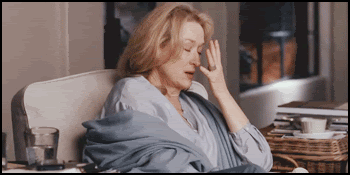
Insert face palm here.
This thinking was a huge disservice to ALL of my students’ educations. As I introduced books with prominent women historic figures or girl characters, I realized if the books were about gender, we would discuss identity and tolerance. Other times if the story just happened to have a girl character, but gender wasn’t a central feature of the story, my scholars just wanted to focus on the great story and how the universal lessons applied to their lives.
Four lessons to think about when teaching women’s history so both boys AND girls grow and learn:
- Two words: cool stories. Above all, if it’s a great story, it doesn’t matter who is on the cover. Everyone will want to sit up and participate.
- Pick contemporary and diverse stories. To continue to show the relevancy of the women’s movements and contributions of women to society, we owe it to all of our students to find more contemporary examples of women figures and showcase more diverse participants in equality. Let’s keep exposing our kids to women of today and of different backgrounds.
- Show explicit examples of men championing women. Boys need to see great role models of men advocating for women alongside or behind the scenes. There are plenty of men who have been in the trenches with women fighting for social
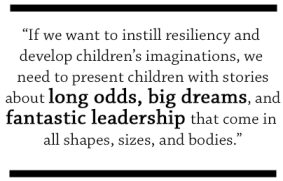 justice and as invested in their wives, daughters, sisters, and mothers achieving great success in a field of study as the women themselves. If we want future generations of men to respect and support women, we need to offer boys examples of how to recognize and champion women’s contributions. Boys and girls need to see that the struggles for equality impacted everyone and were not about one group’s success at the other’s detriment.
justice and as invested in their wives, daughters, sisters, and mothers achieving great success in a field of study as the women themselves. If we want future generations of men to respect and support women, we need to offer boys examples of how to recognize and champion women’s contributions. Boys and girls need to see that the struggles for equality impacted everyone and were not about one group’s success at the other’s detriment.
- Talk about the universal lesson and character traits. Everyone can learn from a story about overcoming obstacles, persistence, and courage. Women like Wangari Maathai and Pura Belpré fought for what they loved and believed was right first, and then fought for who they were and who they represented. If we want to instill resiliency and develop children’s imaginations, we need to present children with stories about long odds, big dreams, and fantastic leadership that come in all shapes, sizes, and bodies.
Throughout the year and especially during Women’s History Month, we need to teach that gender shouldn’t be an excuse to bar someone from exploring or contributing to a field of study. Concurrently, we want to show all students that gender can offer a unique perspective or approach that should be recognized and celebrated.
Alongside our girls, boys need the language of equality and a broader view of history. Women’s contributions advanced our society and continue to impact all of us. We need to teach that gender totally does matter and, at the same time, totally doesn’t matter.

Shining Star: The Story Of Anna May Wong
Susan B. Anthony Is Great, But Who Else Do We Have? Here are books about high-achieving women from diverse backgrounds with diverse pursuits.

Baby Flo: Florence Mills Lights Up The Stage
Women and The Men That Championed Them. Explore these books with awesome men celebrating awesome women:

Killer Of Enemies
Stories That Will Hook ’Em All. Here are stories so fun that it won’t matter who is on the cover…but the cover just happens to feature a girl:
Filed under:
Curriculum Corner Tagged:
children's books,
diversity,
Educators,
Girls/women,
History,
holidays,
Reading Aloud,
reluctant readers,
Wangari Maathai,
women in history,
women's history month 

Do you read aloud much nonfiction with your children? If they're reluctant, try reading them Marissa Moss's terrific picture book biography
Nurse, Soldier, Spy -- The Story of Sarah Edmonds, a Civil War Hero. Our students LOVED the way Moss drew them into Sarah's story with unexpected twists and turns. They especially commented on John Hendrix's art and design.
Nurse, Soldier, Spy
The Story of Sarah Edmunds, a Civil War Hero
by Marissa Moss
illustrated by John Hendrix
Abrams, 2011
Amazon
your local library
ages 7-12
At age nineteen, Sarah Edmonds disguised herself as a man and joined the Union Army to fight in the Civil War. She took the name Frank Thompson, and headed off to battle the Confederacy with her Michigan regiment. Frank, as Sarah was known, was an outstanding soldier, brave and true, risking his/her life to help others.
My students loved the way Hendrix showed the battle scenes, using both color and dramatic lines to bring readers right into the scene.
Hendrix also makes the words pop out from the page with his dramatic design. My students found this particularly effective. I was very interested to learn from Elizabeth Bird's
Fuse 8 post in the
School Library Journal that "Hendrix takes his hand-drawn letters from the illustrated letterforms found on broadside posters from that era."
You might want to share with older children Marissa Moss's novel
A Soldier's Secret. I have not had a chance to read this, but here is the publisher's description:
Historical fiction at its best, this novel by bestselling author Marissa Moss tells the story of Sarah Emma Edmonds, who masqueraded as a man named Frank Thompson during the Civil War. Her adventures include serving as a nurse on the battlefield and spying for the Union Army, and being captured by (and escaping from) the Confederates. The novel is narrated by Sarah, offering readers an in-depth look not only at the Civil War but also at her journey to self-discovery as she grapples with living a lie and falling in love with one of her fellow soldiers.
Using historical materials to build the foundation of the story, Moss has crafted a captivating novel for the YA audience.
All illustrations are copyright
© John Hendrix, 2011; see his website for more terrific examples. The review copy came from our school library. If you make a purchase using the Amazon links on this site, a small portion goes to Great Kid Books (at no cost to you!). Thank you for your support.
©2014 Mary Ann Scheuer, Great Kid Books
As a child, I was in awe of Helen Keller. She overcame so many difficulties, but kept persevering, learning and reaching out to people. At my school, children are still drawn to her story. I love sharing Doreen Rappaport and Matt Tavares's stirring biography with them.
 Helen's Big World:
Helen's Big World:
The Life of Helen Keller
by Doreen Rappaport
illustrated by Matt Tavares
Disney / Hyperion, 2012
ages 5 - 9
available at your local library and on Amazon
Doreen Rappaport gives readers a clear sense of Helen's whole life, from the illness that left her blind and deaf as a child, to her years with Annie, and then her accomplishments as an adult.
Throughout it, Rappaport highlights Keller's own inspiring words in large, bold print. Young readers will be inspired not only by how Helen overcame her own disabilities, but how she used her voice to speak up for justice and equality for all.
From the
Author’s Note:
I remember when I went to the theater and saw the play The Miracle Worker, which focuses on the early relationship between Helen and her teacher Annie Sullivan. The most electrifying moment in the play, and in the biographies of Helen Keller, was always the moment at the water pump, when Helen connected the water flowing over her hand with the word that Annie was spelling into her other hand.
That moment reminds us of how we learn, and the power of learning; the more we understand things, the larger our world becomes. Annie Sullivan opened up Helen Keller’s limited, dark, silent world; it grew and grew until it truly became a big world.
Kids will enjoy checking out the American Foundation for the Blind's
Helen Keller Kids' Museum Online, full of pictures and short paragraphs of information.
The review copy came from our school library. If you make a purchase using the Amazon links on this site, a small portion goes to Great Kid Books (at no cost to you!). Thank you for your support.
©2014 Mary Ann Scheuer, Great Kid Books
 March 8th marks International Women's Day, a celebration that has been observed since in the early 1900's. On this day, thousands of events are held throughout the world to inspire women and celebrate achievements.
March 8th marks International Women's Day, a celebration that has been observed since in the early 1900's. On this day, thousands of events are held throughout the world to inspire women and celebrate achievements.
I have really enjoyed sharing with students the website for the Nobel Prize. Since 1901, prizes have been awarded for remarkable achievements in physics, chemistry, medicine, literature and peace. Of the more than 500 prizes 45 have been awarded to women (see the list here), an amount that I think is much too small. But one way to inspire girls of today to reach for greatness is to celebrate the achievement of other women.
The Nobel Prize website provides information for every Nobel Prize since 1901, including the Nobel Laureates' biographies, Nobel Lectures, interviews, photos, articles, video clips, press releases, educational games and more.
Find out about
Tawakkoi Karman, who has worked toward improving women's rights in Yemen. Read about
Françoise Barré-Sinoussi, who discovered the human immunodeficiency virus (HIV). Share about
Emily Greene Balch, a leader of the American peace movement.
Each day this month, I will be sharing different resources to help children learn about amazing women throughout history. What books or websites do you like to share with children during Women's History Month?
©2014 Mary Ann Scheuer, Great Kid Books

By:
Jen Robinson,
on 3/7/2014
Blog:
Jen Robinson
(
Login to Add to MyJacketFlap)
JacketFlap tags:
book awards,
book lists,
homework,
schools,
women's history month,
read across america day,
world read aloud day,
Twitter Links,
growing bookworms,
Add a tag
 Here are highlights from the links that I shared on Twitter this week @JensBookPage. This week we are heavy on events, and lighter than usual on book lists. Major events in the children's book blogging world this week included: the start of Women's History Month, World Read Aloud Day (March 5th), and Read Across America Day (March 2, Dr. Seuss's birthday).
Here are highlights from the links that I shared on Twitter this week @JensBookPage. This week we are heavy on events, and lighter than usual on book lists. Major events in the children's book blogging world this week included: the start of Women's History Month, World Read Aloud Day (March 5th), and Read Across America Day (March 2, Dr. Seuss's birthday).
Book Lists and Awards

 55 Science Picture Books for Kids from @momandkiddo http://ow.ly/ucCso #nonfiction #booklist
55 Science Picture Books for Kids from @momandkiddo http://ow.ly/ucCso #nonfiction #booklist
Winners of the 2014 Blue Peter Book Awards,#kidlit voted on by UK schoolkids http://ow.ly/ujTKJvia @tashrow
2014 Ezra Jack Keats Book Award Winners from @tashrow at Waking Brain Cells http://ow.ly/ucBUc #kidlit
Middle Grade Science Fiction recommendations (old and new) from Stephanie Whelan @greenbeanblog http://ow.ly/ueoji #kidlit
Diversity and Gender
Must-read from @catagator at Stacked on Why Talking About Girl Reading Matters http://ow.ly/ucxdX #kidlit #yalit

 Interesting thoughts from @haleshannon On neutral characters and relating to the specific http://ow.ly/ucu4W #yalit #diversity
Interesting thoughts from @haleshannon On neutral characters and relating to the specific http://ow.ly/ucu4W #yalit #diversity
This is very cool! Initiative on Fighting Gender Stereotypes in Kids' Publishing http://ow.ly/ukaB5 #LetBooksBeBooks @PWKidsBookshelf
Events: Women's History Month
The #Kidlit Celebrates Women's History Month blog is back in action for 2014 http://ow.ly/ucwJc @kidlitwhm
Very nice! Great Kid Books: Celebrating Women's History Month: a challenge for the month of March http://ow.ly/ucyUR @MaryAnnScheuer
Celebrating the life & work of Jane Goodall with kindergartners (ages 4-8) by @MaryAnnScheuer http://ow.ly/ujU5K #kidlit
Events: World Read Aloud Day
On National Grammar Day, World Read Aloud Day, and the grammar benefits of reading to kids from @BooksBabiesBows http://ow.ly/uhmb7
World Read Aloud Day (And Why I Do It) from @NoVALibraryMom http://ow.ly/uhlAh #literacy @litworldsays
Read Aloud. Change the World | @pamallyn on World Read Aloud Day @HuffingtonPost http://ow.ly/uerS2 #literacy
Thoughts on tomorrow's World Read Aloud Day from @frankisibberson http://ow.ly/ueoxV @litworldsays #literacy
Very nice! A Year of Reading is Celebrating @NerdyBookClub with a Donation to LitWorld! http://ow.ly/ucyfc @MaryLeeHahn @frankisibberson
Coming Soon: World Read Aloud Day, on March 5th. Read @BookChook thoughts! http://ow.ly/ucyEk @litworldsays
Events: Read Across America Day
Oh, the Quotations You’ll Forget! @PhilNel sets the record straigt on things Dr. Seuss didn't say http://ow.ly/ucyvf
A bit late, but a nice list of resources for Read Across American Day / Seuss Day yesterday at Wendie's Wanderings: http://ow.ly/ucyoa
Growing Bookworms
RT @tashrow Getting the right books into every young child’s hands | Dallas Morning News http://buff.ly/OzdFgt #kidlit #reading
Many of you will be able to relate to this: On the joys of Good Old-Fashioned Books by @growingbbb http://ow.ly/ujV63
Quick #literacy ideas for Snow Days at Family Bookshelf http://ow.ly/ucBRj @readingtub
On encouraging new readers to check in less frequently, and have more confidence @ReadingWithBean http://ow.ly/ucxJA
True! Kids Are Never Too Old to Be Read to by Parents | Joe Paradise @HuffPostEducation http://ow.ly/u6ny5 via @tashrow
Kidlitosphere
Via @tashrow good news for bloggers. Most of the many Getty Images will soon be Free to Use | http://ow.ly/ujTuu
An introduction to @sljournal Battle of the Kids’ Books by @medinger @NerdyBookClub http://ow.ly/u6mQO #kidlit
On Reading, Writing, and Publishing
Get Pinterest list of "What (children's) books taught me...", shared by @rosemondcates http://ow.ly/ujUhq #kidlit
Lovely post on The Warmth of a Shared Experience (crying while reading aloud) by Cynthia Lord | @NerdyBookClub http://ow.ly/ueoZb
Thoughts from @LizB On Liking (and not liking) Characters and why we should ask ourselves why we do (or don't) http://ow.ly/ucCbJ
Great stuff! A strong defense of Reading children's books as an adult from Views From the Tesseract http://ow.ly/ucwZ7
Schools and Libraries
Shanahan on #Literacy: Don’t Give the #CommonCore State Standards a Close Reading and Other Culinary Tips http://ow.ly/u6mF6
For those interested in good elementary school #nonfiction, @frankisibberson is having A @mstewartscience Week http://ow.ly/ucCzh
Is Homework Beneficial? Four Steps to Improvement from @TrevorHCairney http://ow.ly/uhLZX
© 2014 by Jennifer Robinson of Jen Robinson's Book Page. All rights reserved. You can also follow me @JensBookPage or at my Growing Bookworms page on Facebook.

Wangari Maathai won the Nobel Peace Prize in 2004 for her work helping women throughout Africa planting trees to improve the environment and their quality of life. As we celebrate Women's History Month, I make sure to introduce students to women from throughout the world who have worked hard to improve their communities.

Seeds of Change
Planting a Path of Peace
by Jen Cullerton Johnson
illustrations by Sonia Lynn Sadler
Lee and Low, 2010
your local library
Amazon
ages 6-10
Although it was unusual for girls to receive formal education in rural Kenya, Wangari’s parents agreed to send her to school. Wangari’s determination and hard work continued as she went first to high school in the city, and then to university in the United States to study biology.
Wangari returned to Kenya to teach and inspire women scientists, but became concerned when she saw the environmental damage that was occurring throughout the country. Maathai established the Green Belt Movement, bringing about environmental and economic change in Kenya by helping local women plant over thirty million trees.
I would also share this video clip, from the PBS/Independent Lens documentary
Taking Root: The Vision of Wangari MaathaiInternational Women's Day, March 8th, is a global day celebrating the economic, political and social achievements of women past, present and future. In some places like China, Russia, Vietnam and Bulgaria, International Women's Day is a national holiday. Are you celebrating International Women's Day with your children?
The review copy came from our school library. If you make a purchase using the Amazon links on this site, a small portion goes to Great Kid Books (at no cost to you!). Thank you for your support.
©2014 Mary Ann Scheuer, Great Kid Books
I am excited to see my kindergarten class today and introduce them to a woman I truly admire: Jane Goodall. I will read aloud the wonderful picture book Me, Jane by Patrick McDonnell, but first I want to tell them a bit about Jane's life. I will share this video from the Jane Goodall Institute to introduce students to her life work:
Jane Goodall: Showing Us the Way to a Better World from the Jane Goodall Institute on Vimeo.
We will then read aloud Me, Jane by Patrick McDonnell and talk about how you can see her interest in animals when she was a young child.
 Me, Jane
Me, Jane
by Patrick McDonnell
Little, Brown, 2011
2012 Caldecott Honor Award
ages 4-8
your local library
Amazon
Little Jane carries her stuffed chimpanzee Jubilee around with her everywhere - reading stories, exploring outside, climbing trees.
Right from the beginning, children can relate to having a favorite stuffed animal. Jane loves exploring the outdoors - and so she spends most of her time either watching animals and plants outside or writing in her journal about facts she's discovered. Children can easily imagine keeping a journal with questions and observations about the animals around them.
Is there a scientist you look forward to telling students about during Women's History Month?
The review copy came from our school library collection. If you make a purchase using the Amazon links on this site, a small portion goes to Great Kid Books (at no cost to you!). Thank you for your support.
©2014 Mary Ann Scheuer, Great Kid Books

View Next 25 Posts








 Pure Grit:
Pure Grit: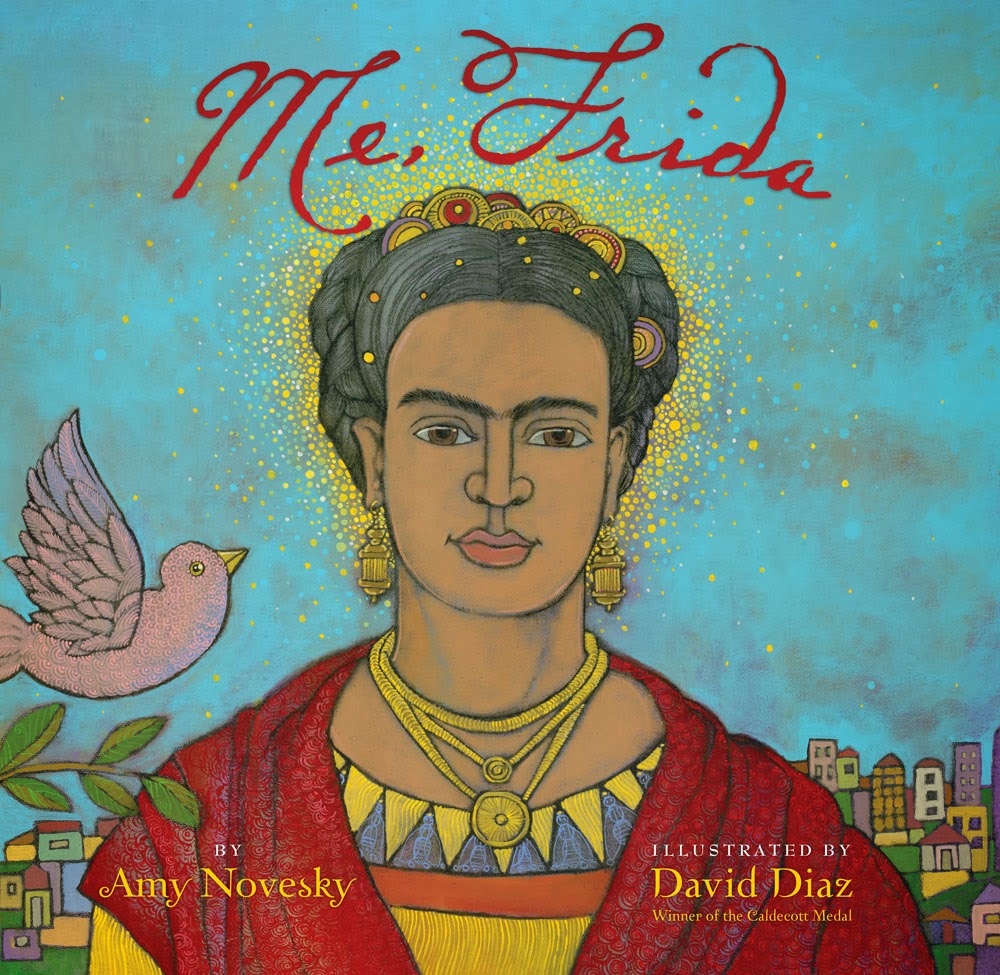
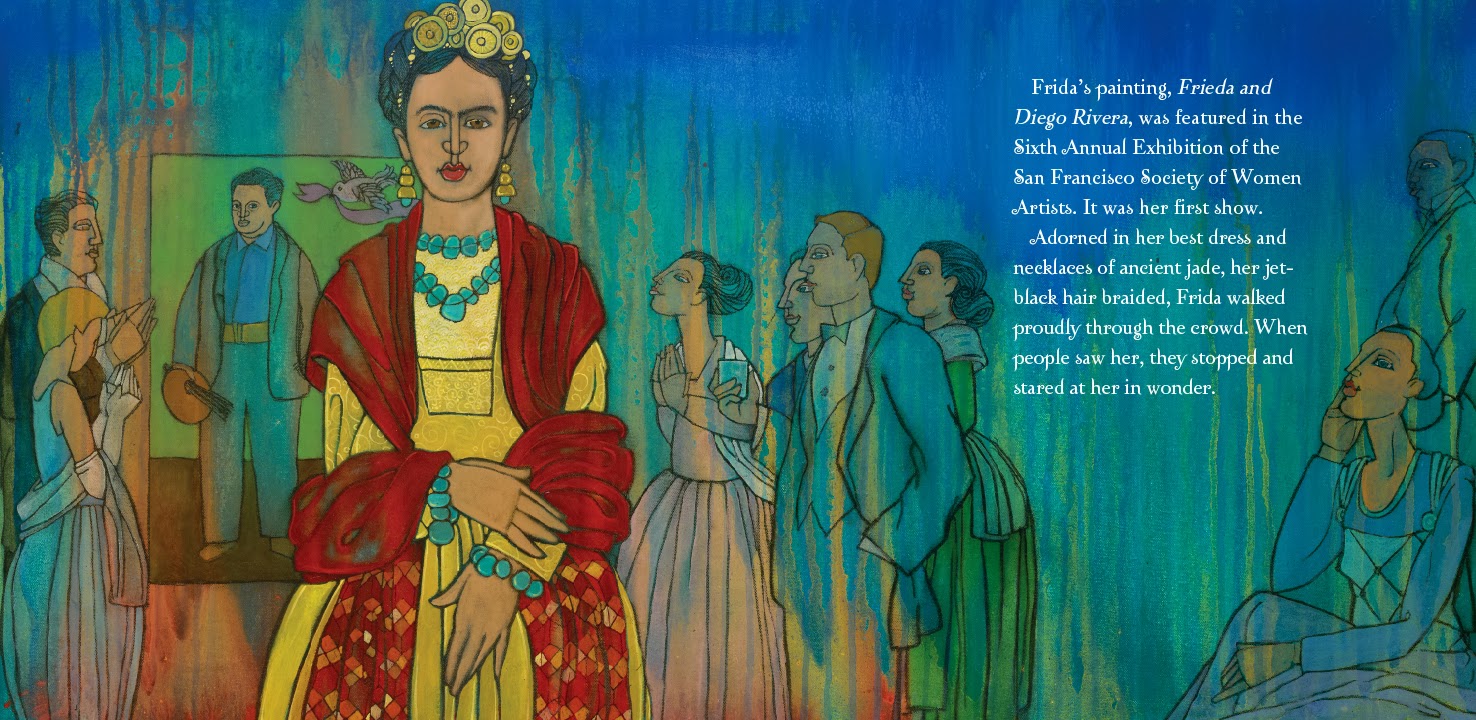












































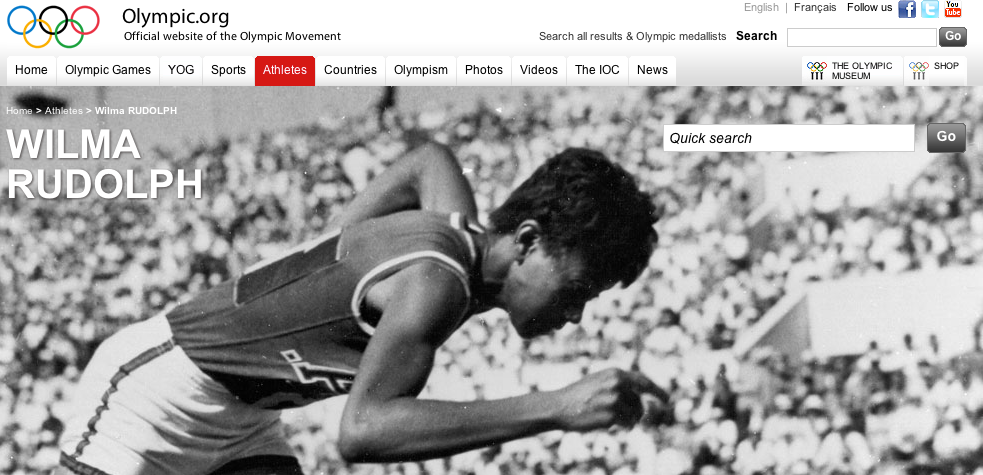
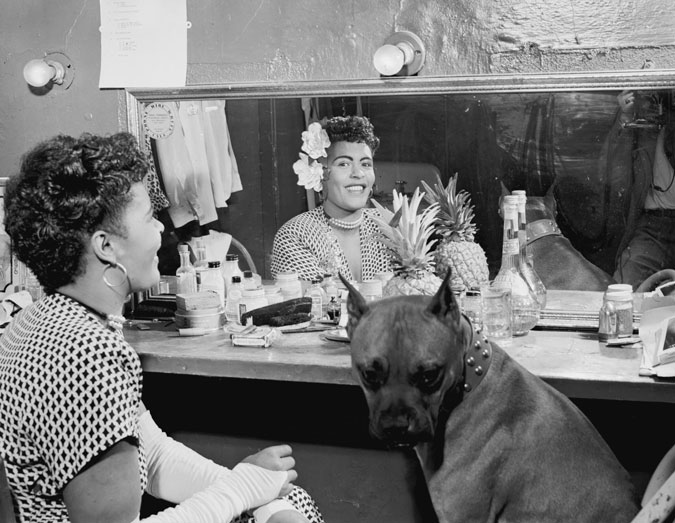


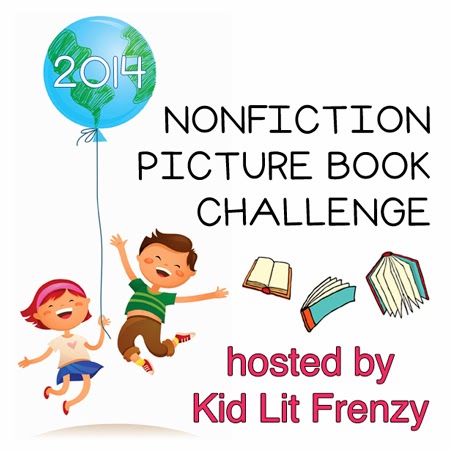


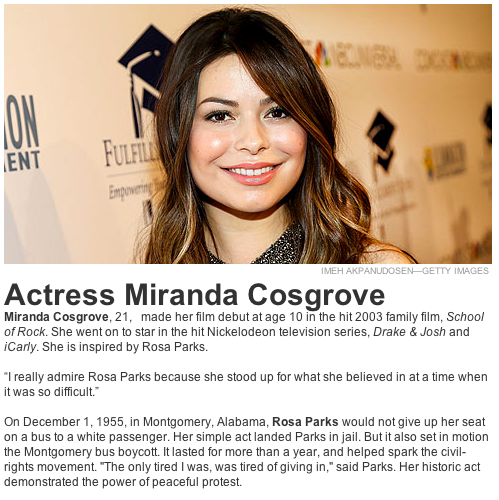















I’d add to this list the real-life Lozen, the woman who inspired Joseph Bruchac’s character by the same name in KILLER OF ENEMIES. She was a warrior (beside Geronimo and her brother, Victorio) who defended the Apache people during a terrible time of war with the United States, as well as using her skill as a tracker (and some supernatural skills) to know where their enemies were coming from.